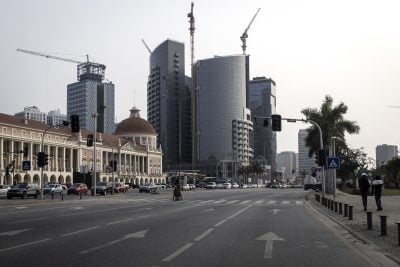Airlines operating in Africa are currently confronting many of the same problems as their counterparts elsewhere in the world. Economic uncertainty in key markets has affected both business and holiday travel volumes, while the price of aviation fuel is forcing up costs and driving down margins. Yet both Airbus and Boeing are putting more effort into attracting business from African airlines and this should drive capital investment costs down. At the same time, a steadily growing proportion of the African population can now afford to travel by air on the back of economic growth and are benefiting from growing airline competition, particularly from low cost carriers.
The global airline industry continues to be plagued by a combination of economic uncertainty and high oil prices. Fears of economic stagnation in North America, Europe and Japan are deterring some airlines from either buying or leasing new aircraft.
Periods of such economic frailty would generally be accompanied by lower fuel prices, but continued strong economic growth in East and South Asia keeps oil prices at around $100 a barrel and makes jet fuel very expensive by historic levels. The director general and chief executive of International Air Transport Association (IATA), Tony Tyler, said: “Airlines are being cautious managing through the uncertainty.”
At the same time, there is no doubt that demand for airline services is continuing to grow. According to figures from IATA, the number of passenger journeys worldwide was 6.1% higher in April than in the same month last year.
An average of 79.3% of all seats were filled in the month, which is the highest figure on record, suggesting that greater efficiency is being achieved across the board.
The load factor – or proportion of seats filled – was much lower in Africa than elsewhere, at 65.9%, although this was a 7% increase on the same month in April 2011.
Africa also performed better than the rest of the world in the air cargo sector. Global demand was 4.2% lower this April than in April 2011 but increased by 6.1% in Africa on the back of a big increase in transport capacity.
In the meantime, airlines must tighten their belts in order to survive market uncertainty. IATA forecasts that the industry will generate revenues of $631bn this year but a profit of just $3bn, giving a very tight net profit of just 0.5%.
The chief executive of Ethiopian Airlines Tewolde Gebre Mariam explained: “I think one of the most difficult challenges we are facing … is profitability. On the supply side, the oil price is going up and staying at its highest level for a long period of time. On the demand side, we have excess capacity. It’s very common now to see airlines flying to destinations in half-empty aeroplanes.”
In the face of such challenges, there is still huge scope for capacity and efficiency improvements. For instance, many African airports are still unable to operate at night, cutting the number of available landing and take-off slots in half.
Competition claims victims
As always, the situation on the ground varies greatly from airline to airline, market to market and sector to sector. The cancellation of two services between Africa and London Heathrow has attracted a great deal of attention in recent weeks. In both cases, intense competition between three airlines appears to have forced one of the players out of the market. Firstly, Virgin Atlantic announced that it would end its flights between Nairobi and Heathrow, leaving British Airways and Kenya Airways to dominate the route, although British Airways has reduced the number of its flights.
Although the number of business customers remains buoyant, the tourist sector has been badly affected by the renewed economic downturn in Western Europe and well publicised attacks on foreign tourists in Kenya.
Then, South African Airways (SAA) revealed that it would cease its Cape Town-Heathrow service from 16 August this year to concentrate on its Johannesburg-Heathrow service. SAA’s general manager for commercial, Theunis Potgieter, said: “It is also clear that we would lose money on the direct route in future, whereas it is possible for us to operate more optimally between Cape Town and London via our Johannesburg hub.”
Despite such news, the African continent’s strong economic performance is persuading many overseas airlines to target African airports. Turkish Airlines (THY), for example, is expanding its African operations at a remarkable pace. Speaking at the IATA annual general meeting in Beijing in July, the company’s chief executive Temel Kotil said that the number of African cities served by the carrier will increase from 20 at present to 30 by the end of this year and then 40 by the end of 2013. It will make the final investment decision on the acquisition of further aircraft later this year to offer even more African services. THY was the third airline to resume flights to Mogadishu and the first non-African airline to fly to the Somali capital for 20 years.
Kotil said: “Africa is increasingly important for Turkey and THY. We are aiming to become the leading carrier in the continent.” Such ambitious rhetoric is becoming increasingly common. It may lead to a crash e in the distant future but such optimism is surely a good sign in the more immediate future.
African airlines certainly face a difficult time. Price competition and rising costs are difficult overcome. Yet a combination of continued strong economic growth across the continent and increased cross-border trade will generate an exponential rise in air travel over the next decade. Those airlines that survive in the short term should prosper in the long term. Many analysts focus on competition between local and non-African airlines but the real battle will be fought between traditional and low-cost operators. There may be room for both but each sector is likely to see a string of failures in the years ahead.
Want to continue reading? Subscribe today.
You've read all your free articles for this month! Subscribe now to enjoy full access to our content.
Digital Monthly
£8.00 / month
Receive full unlimited access to our articles, opinions, podcasts and more.
Digital Yearly
£70.00 / year
Our best value offer - save £26 and gain access to all of our digital content for an entire year!

 Sign in with Google
Sign in with Google 




